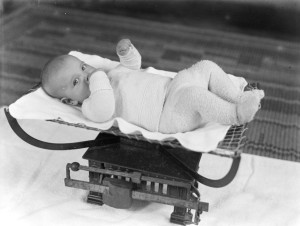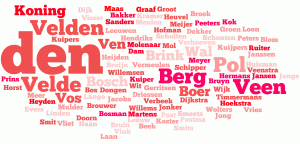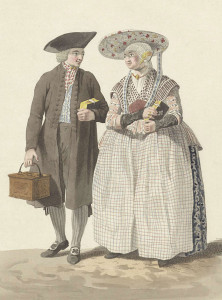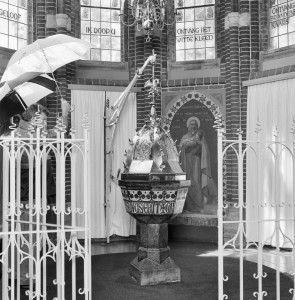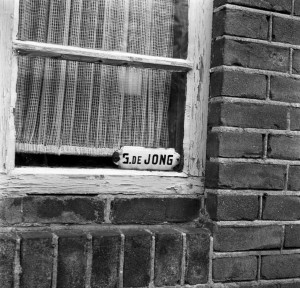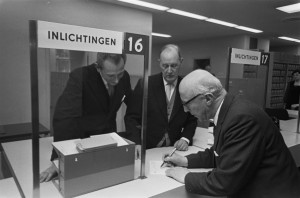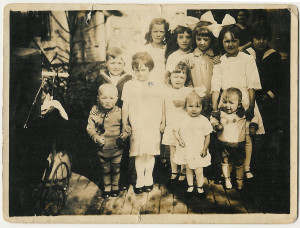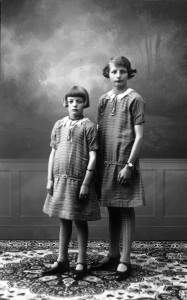In the Dutch language, the suffix '-je' indicates a diminutive. Depending on the preceding word, it can be -je, -kje, -tje, -pje, or -etje; sometimes with an -n at the end. In Low Saxon dialects in the north-east of the Netherlands, -ke, -ske, -ken, -sken, or -chien are used. The diminutive suffix is used for nouns and names. Many female names are diminutive forms of male names. The diminutive form of a name is also used for a young child, so studying the name in context is necessary to … [Read more...]
Eight Dutch Naming Patterns to Watch Out For
Understanding how Dutch people named their children or themselves will help you solve your family mysteries. Here are eight Dutch naming patterns to watch out for. Naming children after grandparents Many Dutch children were named after their grandparents, often in a specific order: the first son after the paternal grandfather, second son after the maternal grandfather, first daughter after maternal grandmother, second daughter after paternal grandmother. After the grandparents were named, … [Read more...]
Quick tip – That Frisian female might be male!
If you do research in Friesland, you will notice that the names there are quite different from the rest of the Netherlands. Friesland has its own language, Frisian (Fries) which comes with its own unique set of names. Some Frisian male names look like female names to those of us who are not from Friesland. Some of these names are used as female names in other parts of the country. If you're unsure whether the person is male or female, check the record to see what the role is (bruidegom/groom, … [Read more...]
Quick tip – Most Catholic names end in -us or -a
Catholic records were kept in Latin, while civil registration records are kept in Dutch (or French, depending on the time). But Catholic families often recorded the Latin version of the name as the official version with the civil authorities as well. Latin names often ended in -us (for men) or -a (for women). So a person who was called Petrus Josephus in the official records, may well have been called Piet in his every-day life. Here are some other names with their Dutch given names. Men: … [Read more...]
Quick tip – Emigrant names were often phonetic equivalents
If you're trying to figure out what the original name of your immigrant ancestor was, don't just focus on official translations, but also figure out what names may have sounded the same. For example, a woman named Jessica in Australia may well have been called Tjitske. A man named Dick (short for Richard) in the United States may well have been Dirk (short for Theodorus) in the Netherlands, even though the official translation would have been Theodore. A Dutch woman named Aaltje may have … [Read more...]
Dutch Genealogy Webinar – Questions about Dutch Names
This is my third post answering the questions asked by viewers of my "Researching Your Dutch Ancestors" webinar. In this post, I will answer questions about Dutch names. What are patronymics? Patronymics are names that are derived from the father's name, like Jansen = son of Jan. In some parts of the Netherlands, people did not have a hereditary surname before the introduction of the civil registration in 1811. Read more about patronymics. What were the naming patterns? Most Dutch children … [Read more...]
Quick tip – Watch out for same-named cousins
Because Dutch children were often named after their grandparents, it is not unusual to find several first cousins with the same name, all named after the same grandparent. Often, these same-named cousins will be of a similar age, which can make it easy to confuse the two (or three, or even more!). When you are trying to identify someone, always try to find a document that list the person with his spouse and parents, for example in a marriage record or death record. That will tell you which … [Read more...]
Quick tip – No middle names
People in the Netherlands did not have 'middle' names. They could have one or more first names, followed by their last name. But even if they had two first names, they would be considered two first names and not a first and a middle name. Before say 1700, most people had just one first name. Afterwards, giving a child multiple first names became popular in some regions. In Catholic families, you can sometimes see a whole string of first names, like "Cornelia Adriana Maria." In some regions … [Read more...]
Dutch term: Neef en Nicht
A neef is a male relative: either a first cousin or a nephew. A nicht is a female relative: either a first cousin or a niece. Like the word 'cousin' in English, the words 'neef' and 'nicht' are sometimes used to describe a more distant relationship. Someone who is referred to as a 'neef,' may turn out to be the husband of a first cousin once removed. Because of the Dutch tradition to name people after relatives you will often find several 'neven' and 'nichten' with the same first (and … [Read more...]
Quick tip: try spelling variations
Even after the introduction of the civil registration, but especially in earlier records, there may be spelling variations of a name. A woman may be called Elizabeth or Elisabeth, her last name might be written as Jansen or Janssen. Especially since most Dutch search engines only find exact matches, it is important to try different spelling variations or use wildcards. A search for Eli* Jans* would have found all four variations of the name. If you can't find a person, also search for … [Read more...]
